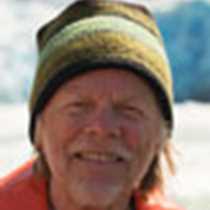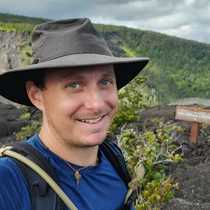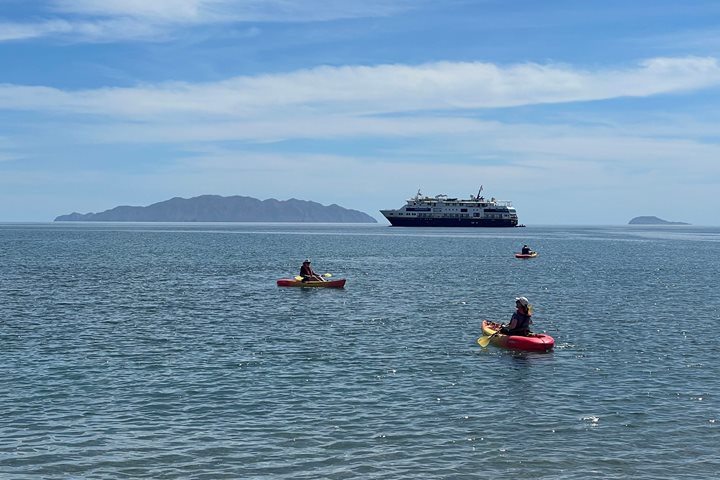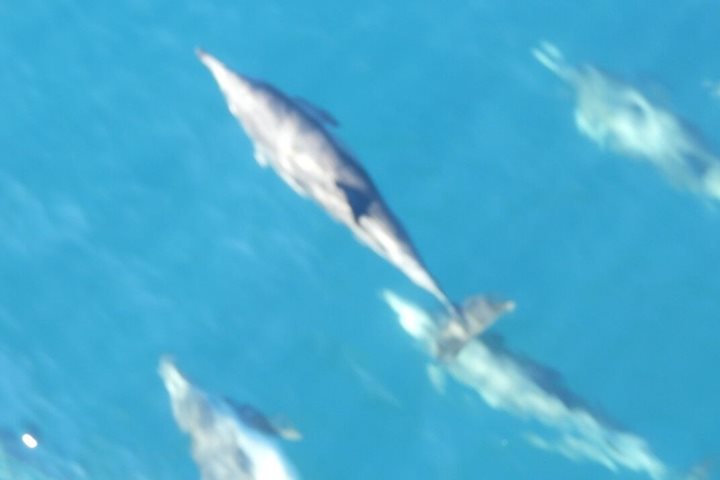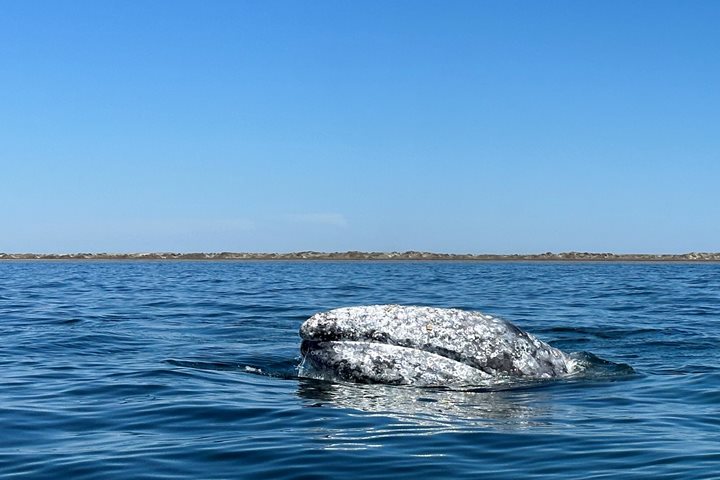After breakfast, we traveled to the protected shore of Isla Magdalena and stepped onto a beach paved with uncountable numbers of diverse shells: large and small, intact and broken. One could easily conduct a course in bivalve and gastropod biology just by taking a short stroll. Nevertheless, the real goal of the morning hike was to walk the famous dunes of this region to Sand Dollar Beach that lines Bahía Santa Maria. The dunes and dune ecosystem were stunning, with tracks of lizards, coyotes and jackrabbits winding among desert plants and ancient middens of shells deposited by peoples from the distant past. We viewed excellent examples of the various physical and biological stages of dune creation and progression.
Sand Dollar Beach simply must be considered one of the 10 best beaches of North America. A broad, flat beach of fine sand, it spans about eight miles. And although peaceful and serene during our visit, in stormy conditions it would provide any visitor a humbling sense of raw power and energy. The isolation was sublime; other than us Sand Dollar Beach was occupied only by pelicans, cormorants, frigatebird – and, of course, innumerable sand dollar tests of all sizes.
After lunch, National Geographic Sea Lion traveled through the mangrove-lined Hull Canal under sunny skies and with a gentle breeze. On the charts, the canal is identified as unnavigable, but with the combination of our ship’s shallow draft and presence of a highly competent local pilot (3rd generation) on the bridge, our safe passage was ensured. We encountered memorable sights: herons, ibises, and egrets among the mangroves; pelicans, frigates, ospreys, and cormorants in the air; coyotes running over the dunes; bottlenose dolphins riding our bow wave; and five solitary gray whales. Tomorrow brings more whales and dunes.


